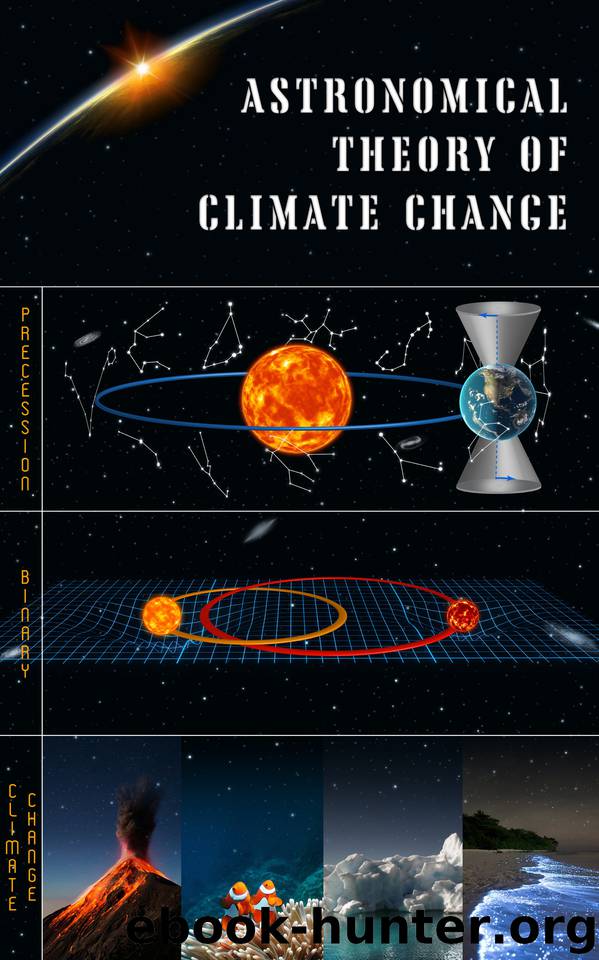Astronomical theory of Climate Change by J N

Author:J, N [J, N]
Language: eng
Format: epub
Published: 2017-07-19T16:00:00+00:00
This tropical phenomenon is a rainy phase of annual shifts in position of winds and pressure belts. With the shift of the vertical sun in summer hemisphere, the position of ITCZ shifts towards the pole facing the Sun. The migration of low pressure jet during the summer months into a landmass precedes the beginning of the annual rainy season. As discussed earlier, ITCZ marks the convergence of north-east trades from NH and south-east trade winds from SH.
When ITCZ moves northward, the south-easterly trade winds of southern hemisphere must cross the equator to reach the ITCZ. Due to Coriolis Effect, this southeast trades are deflected right upon crossing the equator and transform into south westerly winds. Reversal of winds do not cause precipitation on their own, however these pick up the moisture travelling from sea to land.
Once these southwest winds hit the rising terrain of Southeast Asia and Indian Peninsula, air mass is lifted upwards to higher elevation forming clouds and precipitation. This signals the arrival of south-west monsoon. Similarly, when ITCZ moves south during southern summer, north-east trades turn north-westerly south of the equator picking up the moisture from sea. This brings cloudy and rainy season in southern tropics between November and February.
Due to large dependency on these wind patterns for most of their precipitation, monsoon is most awaited season for tropical regions of Asia, Africa, America and Australia. Variability in timing and strength of monsoon often results in environmental and socio-economic losses.
Download
This site does not store any files on its server. We only index and link to content provided by other sites. Please contact the content providers to delete copyright contents if any and email us, we'll remove relevant links or contents immediately.
Barron's AP Biology by Goldberg M.S. Deborah T(4053)
Aliens by Jim Al-Khalili(2753)
MCAT Physics and Math Review 2019-2020 by Kaplan Test Prep(1726)
Cracking the AP Physics C Exam, 2018 Edition by Princeton Review(1649)
The Two Cultures by C. P. Snow(1241)
Biology For Dummies by Fester Kratz Rene(1212)
Biology For Dummies (For Dummies (Math & Science)) by Rene Fester Kratz(1206)
500 AP Chemistry Questions to Know by Test Day(1184)
Cracking the AP Chemistry Exam, 2012 Edition by Princeton Review(1155)
MCAT Organic Chemistry Review 2019-2020 by Kaplan Test Prep(1155)
MCAT General Chemistry Review 2019-2020 by Kaplan Test Prep(1116)
Cracking the AP Physics 2 Exam, 2018 Edition by Princeton Review(1101)
McGraw-Hill Education Preparation for the GED Test by McGraw-Hill Education Editors(1080)
Cracking the AP Chemistry Exam, 2018 Edition by Princeton Review(1061)
Aliens: The World's Leading Scientists on the Search for Extraterrestrial Life by Jim Al-Khalili(1060)
500 AP Chemistry Questions to Know by Test Day by Mina Lebitz(1031)
Chemistry Essentials For Dummies by John T. Moore(1015)
McGraw-Hill Education SAT Subject Test Biology by Stephanie Zinn(1003)
Cracking the AP Environmental Science Exam, 2018 Edition by Princeton Review(987)
